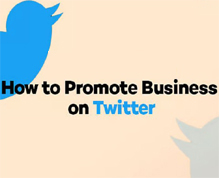Social media has become a powerful tool for marketing, business growth, and brand recognition. Companies, influencers, and creators strive to launch campaigns that not only engage their audience but go viral, reaching millions of people in a matter of days, sometimes hours. So, how do you launch a viral campaign that captures attention and gets shared across the internet? Here’s a detailed guide on how to create a viral social media campaign that spreads far and wide.
1. Understand the Essence of Virality
To launch a viral campaign, you need to first understand what makes content go viral. Virality is often the result of a mix of several factors:
Emotional Connection: Viral content tends to evoke strong emotional responses—whether it’s laughter, shock, awe, or even anger. When people feel something deeply, they are more likely to share the content with their network.
Relevance: The content must resonate with the target audience’s current interests, struggles, or desires. This often involves tapping into trending topics or hot-button issues.
Simplicity: Viral content is typically simple, easy to understand, and shareable. Complexity can often be a barrier to virality.
Visual Appeal: People are naturally drawn to images and videos. Content with strong visual components—whether memes, GIFs, infographics, or videos—tends to perform better.
2. Define Your Goals and Objectives
Before diving into the content creation process, it’s crucial to define the purpose of your campaign. Ask yourself:
What do I want to achieve with this campaign? Is it brand awareness, increased followers, or a direct sales conversion?
Who is my target audience? Understanding their interests, habits, and pain points will allow you to tailor the campaign to them.
Setting clear and measurable goals will help you evaluate the success of the campaign and adjust strategies if necessary.
3. Research Your Audience
Understanding your audience is one of the most important steps in creating a viral social media campaign. Successful viral campaigns resonate deeply with their target demographic.
Demographics: Know the age, gender, and location of your ideal audience. A campaign aimed at millennials will differ from one targeted at Gen Z.
Psychographics: Understand the values, attitudes, interests, and lifestyles of your audience. This allows you to craft content that speaks directly to them.
Behavioral Data: Use analytics tools to understand when your audience is most active on social media, which platforms they frequent, and the type of content they engage with the most.
4. Choose the Right Social Media Platforms
Not all social media platforms are created equal. Your choice of platform should depend on where your target audience spends most of their time. Here’s a quick breakdown of the most popular platforms and their strengths:
Instagram: Perfect for visually engaging content like photos, stories, and videos. Ideal for millennials and Gen Z.
TikTok: A rising star for viral video content. Its algorithm promotes highly engaging content regardless of the account size.
Twitter: Best for real-time updates, news, and engaging in conversations on trending topics.
Facebook: Good for a broader demographic, especially individuals aged 25 and older.
YouTube: Ideal for longer-form video content, tutorials, and detailed product reviews.
Each platform has its own strengths, and it’s important to craft your content to suit the medium.
5. Craft Shareable Content
The foundation of any viral campaign is the content itself. It needs to be:
Emotionally Engaging: As mentioned earlier, content that elicits strong emotions (laughter, empathy, or even surprise) is more likely to be shared. People share content that makes them feel something and want to invoke the same response in others.
Authentic and Relatable: Audiences appreciate authenticity. Content that feels too staged or scripted often falls flat. Relatable content tends to have a higher chance of being shared because people like to share things that mirror their own experiences or beliefs.
Visually Captivating: Ensure your content is visually striking, whether it’s an attention-grabbing thumbnail, a meme, or an infographic. People are drawn to visuals, and a picture really is worth a thousand words.
Concise: Whether it’s a meme, video, or post, keep it concise and to the point. People have short attention spans, and content that’s too long or confusing can quickly lose its viral potential.
Share-Friendly: Ensure your content is easy to share. Make sure it’s optimized for different devices and that there’s a simple way for people to share it with their networks.
6. Use Humor and Creativity
Humor is one of the most effective ways to encourage people to share content. Creative, witty, and lighthearted posts often get shared more than those that are overly serious or corporate. This is especially true on platforms like TikTok and Twitter, where viral trends often revolve around clever, humorous takes on current events or challenges.
Memes: Memes have become the universal language of the internet, and when used properly, they can catapult a campaign to viral status.
Challenges: Create a fun challenge that encourages users to participate and share. TikTok, for example, thrives on challenges where users perform a certain action to a specific song or phrase.
7. Incorporate Trending Topics
Leveraging current events or trending topics is one of the most effective ways to ensure that your content goes viral. If something is trending on social media, there’s already a built-in audience that is interested in that subject matter. The key is to tie your campaign to a trend in a creative and unique way.
Hashtags: Use trending hashtags to expand your content’s reach. Hashtags make your content discoverable, especially on platforms like Twitter and Instagram.
Pop Culture: If there’s a trending movie, TV show, or event, create content that taps into the public’s fascination with it. For instance, using a popular quote or reference from a viral moment can trigger more engagement.
Newsworthy Moments: If a major event is happening globally, such as an election or sports event, consider how your campaign can tie into the discussion.
8. Leverage Influencers and Collaborations
Influencers have the ability to push content to vast audiences. Partnering with influencers who share your target audience can give your campaign a much-needed push.
Identify the Right Influencers: It’s crucial to partner with influencers who align with your brand’s values and voice. The influencer’s audience should also reflect your target demographic.
Micro-Influencers: Don’t overlook the power of micro-influencers. They may have smaller followings, but their audiences are often more engaged and loyal, which can lead to higher conversion rates.
Cross-Promotions: Collaborate with brands, influencers, or even other creators in your niche. Cross-promotion helps you tap into new audiences and can lead to higher engagement.
9. Timing is Everything
When launching a viral campaign, timing is critical. You want to release your content when your target audience is most likely to be online and engaging with social media. Here are some timing tips:
Peak Hours: Post your content during peak social media hours, which vary by platform. For example, Instagram sees high engagement in the early morning and late evening, while Twitter is most active during lunchtime and late afternoon.
Day of the Week: Studies show that certain days of the week yield better engagement. For instance, Thursdays and Fridays tend to see more activity on Twitter, while weekends are better for platforms like Facebook and Instagram.
Leverage Holidays and Events: Special occasions like holidays or events can be perfect times to release viral content, as people are more active and in a celebratory mood.
10. Use Paid Advertising to Amplify Your Reach
While organic growth can help you go viral, sometimes it’s beneficial to use paid advertising to amplify your campaign’s reach. Social media ads, particularly on Facebook, Instagram, and TikTok, allow you to target specific demographics and increase the likelihood that your campaign will go viral.
Targeting: Use precise targeting to reach your ideal audience. Social media platforms offer detailed targeting options based on location, age, interests, and behavior.
Boost Posts: If you already have a piece of content that is performing well organically, consider boosting it to reach an even larger audience.
Retargeting: Use retargeting ads to reach users who have interacted with your content before but haven’t taken action yet.
11. Engage and Monitor Feedback
Once your campaign is live, it’s important to stay engaged with your audience. Respond to comments, share user-generated content, and acknowledge feedback. The more interaction your campaign has, the more likely it is to gain traction.
Engage with User Content: Encourage followers to create their own content related to your campaign and share the best ones. This increases engagement and spreads your campaign further.
Monitor Analytics: Use analytics tools to track the performance of your campaign. This will help you understand what’s working, what’s not, and where to adjust.
Launching a viral campaign on social media requires a combination of creativity, timing, and strategy. By understanding your audience, creating shareable content, and tapping into trends and emotions, you can increase the chances of your campaign reaching viral status. Social media platforms provide endless opportunities for businesses and individuals to amplify their message, and with the right approach, your campaign could be the next big viral sensation.




